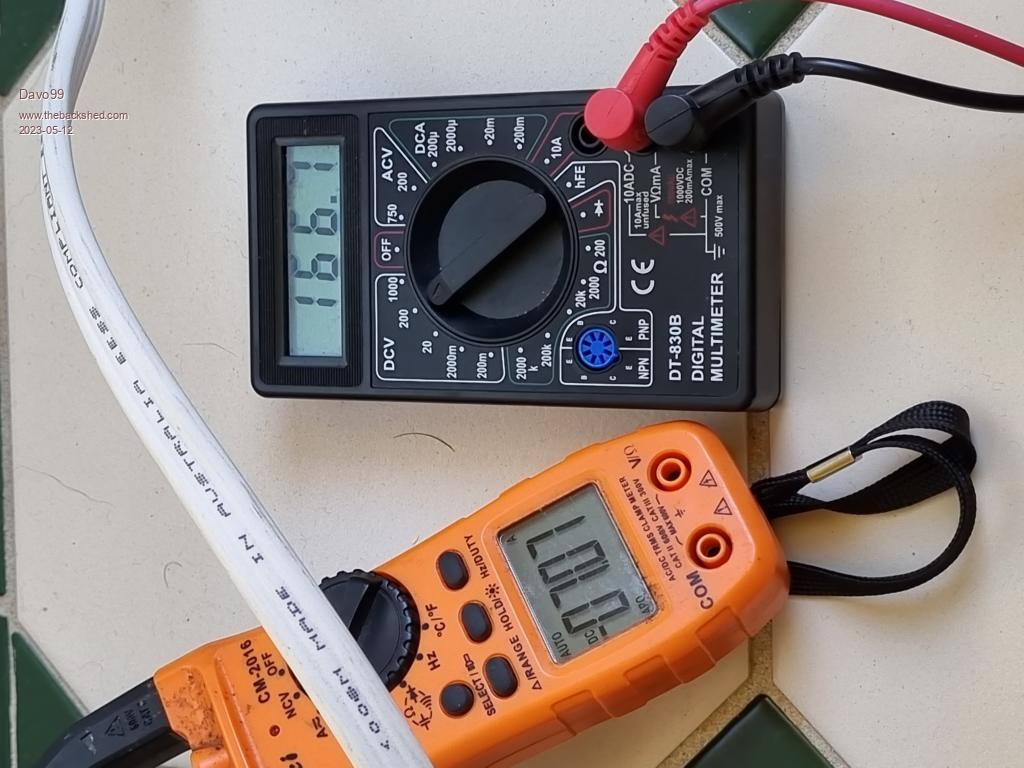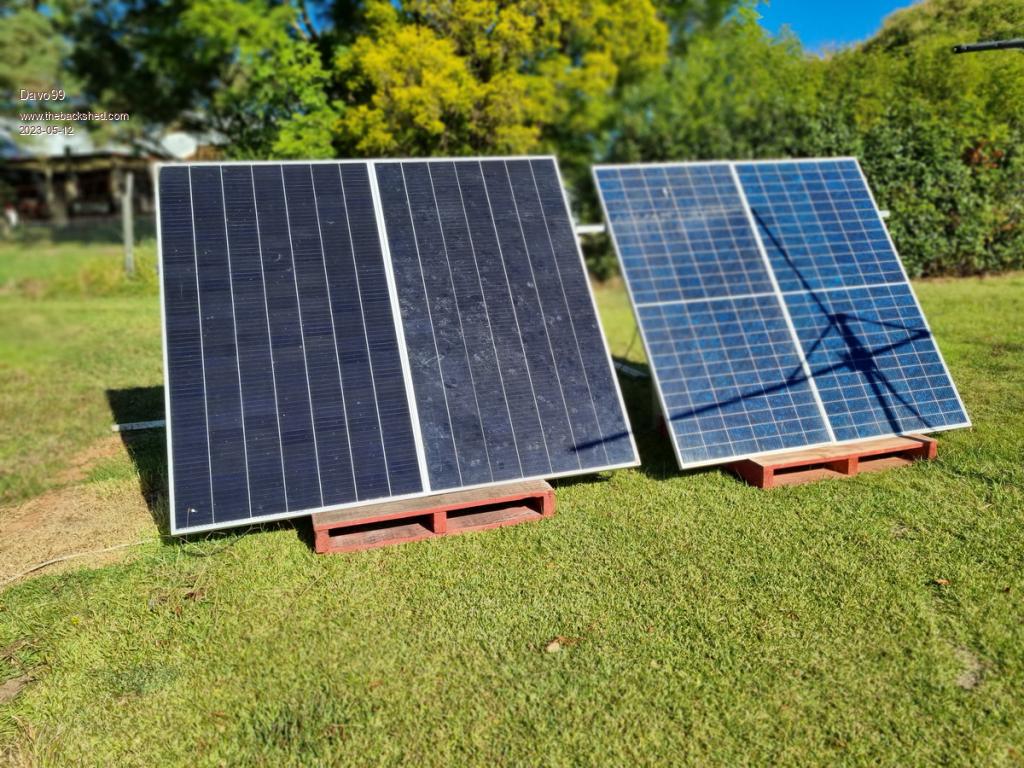Guru
Joined: 03/06/2019
Location: AustraliaPosts: 1584
| Posted: 12:34pm 12 May 2023 |
I have been matching panels to a water heater and boiling it. Modified a cheap kettle to run on DC and I have this last week been doing the same thing with an oil filled space heater.
They are all just resistors, makes no difference.
No, the output without any control electronics is not optimal, as efficient as it can be or anything else. It DOES work however and can work really well.
I looked at the David POZ calculator and have worked off that and now written a lot of my notes and references into it.
The one thing I found is he quotes having LESS resistance in the panels than the load. I found the opposite to be more effective. You want to be in the ball park but as the sun is never going to be at the panels rating and the panels therefore are not going to give full power, I believe this is why adding an extra panels gives good results.
The bottom line is one does not have to get pedantic about this. I have been doing a write up elsewhere On my setup and running 4 mismatched panels with mismatched resistance has been giving me good heat output. Not efficient but frankly, I don't give a rats. I have more panels than I know what to do with on the roof and spare and I'm at the limit of what I can feed back.
Doing a stand alone system is fine regardless of it' it' 90 or 50% efficient.
I tend to just run things flat out. If it's say a 2000W element, then I put enough panels together to deliver that regardless of what the voltage adds up to. It can be more with seriesed panels but who cares? The panel voltage will pull down when the load is applied and as long as the voltage does not go too high, works just fine.
I can easy get 1500W out of 2KW of panels and I'm not sure I'd be getting much more than that if I was running the panels MPPT.
I have also just worked on the direct ohm match and that delivers good power even if half the power of the loads rating.
People IMHO get FAR too pedantic with solar always taking the moral/ technical high ground. You can get away with a LOT with solar because it's completely imperfect from the very start so never going to be spot on.
If you are chasing the highest efficiency, then you need some sort of electronics.
I looked at some layouts here and being an electronic Dilettante, came up with my own simplification that uses 2 pre built boards.
The first was an ardino "Blink" circuit. The one that turns an LED on for a set time than off. Simplest thing the board can do. I concluded that Caps have very low resistance to panels so they won't pull them off their curve. I therefore used a cap bank and determined as long as the caps are not charged to capacity, no power of any merit is lost.
I simply hooked the panels to the caps and used the arduino to cycle a Mosfet to connect the caps to the load. I came up with 50ms off ( charging) 10 switched. I forget the size of the cap bank I have but again, as long as it is not over filled, it does not matter on the cycle rate. It will store all the power the panels produce and if that's not much at the time, caps store it till the are switched to the load and all the power is sent to where it is wanted.
My simple test for this was simply to connect a 500W Light to the array direct and with the pulse circuit late in the afternoon. Direct the lamp glow was just perceivable. With the bang bang circuit, it was noticeably brighter showing the panels were being kept in a far happier place.
I refined/ Cheapened this setup with a cycle timer board that does MS and just had it drive the mosfet. The rest is the same. It's pretty hard to go wrong with this as far as the timing, just give the caps enough time to discharge which seems to be very fast and keep the charge time short enough so whatever caps you are running never get full and that's it.
Having even this simple control does work better but connecting panels direct works fine too.
I have boiled water heaters, a kettle and now the space heater and they all work great.



